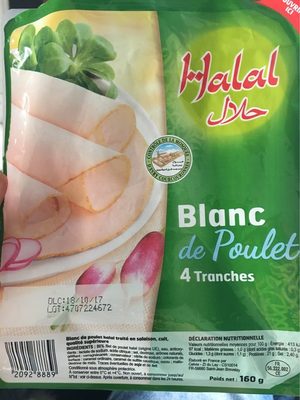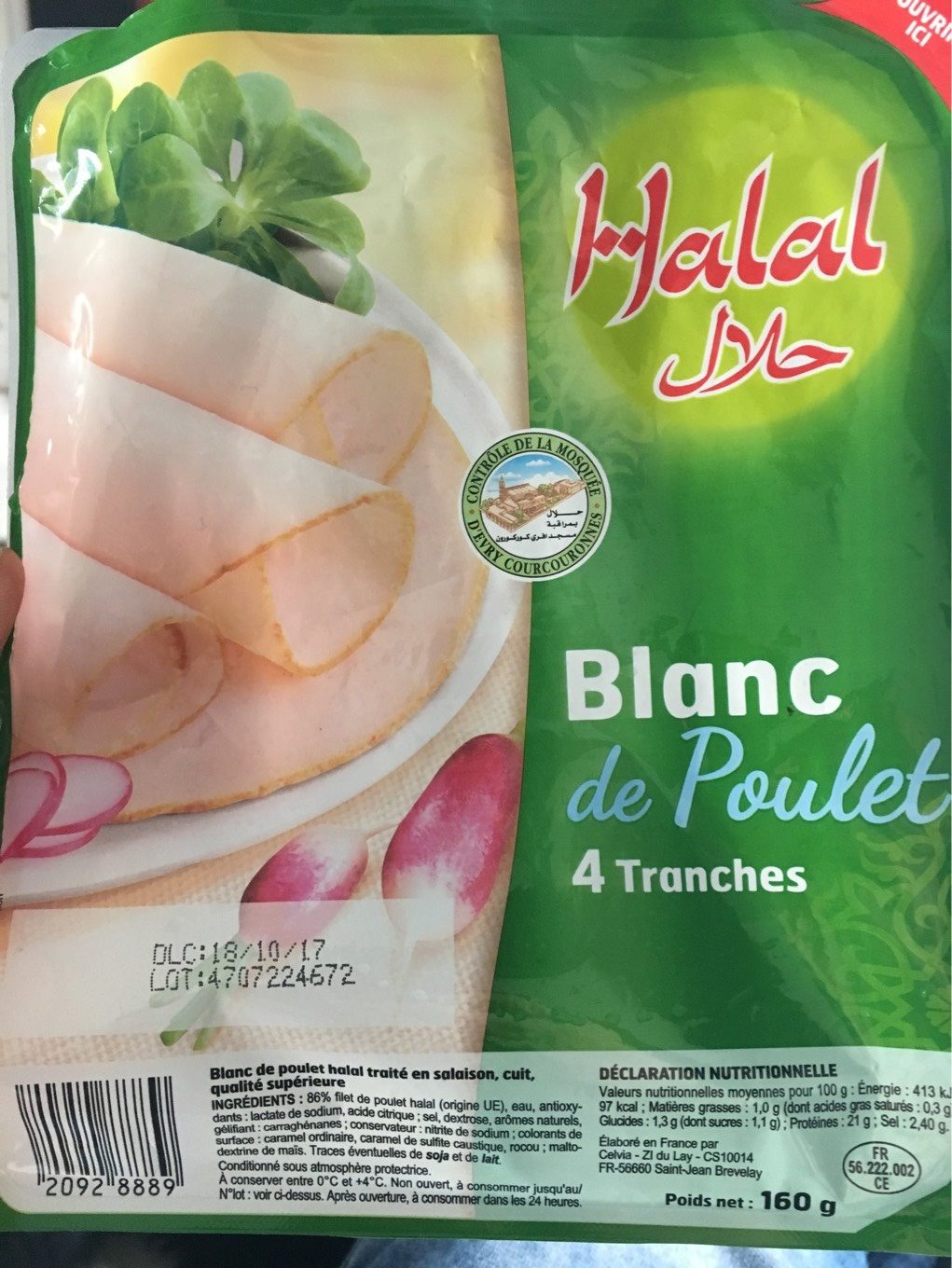Blanc de poulet - Halal - 160 g
Ambiguous barcode: This product has a Restricted Circulation Number barcode for products within a company. This means that different producers and stores can use the same barcode for different products.
×
This product page is not complete. You can help to complete it by editing it and adding more data from the photos we have, or by taking more photos using the app for Android or iPhone/iPad. Thank you!
×
Barcode: 20928889
Quantity: 160 g
Brands: Halal
Categories: Meats and their products, Prepared meats, fr:Charcuteries cuites, Poultry hams, Cooked chicken breast slices
Labels, certifications, awards:
French meat, Halal, French poultry, fr:Contrôle de la mosquée d'Évry-Courcouronnes

Origin of ingredients: France
Traceability code: FR 56.222.002 CE - Saint-Jean-Brévelay (Morbihan, France)
Countries where sold: France
Matching with your preferences
Environment
Carbon footprint
Packaging
Transportation
Report a problem
Data sources
Product added on by kiliweb
Last edit of product page on by roboto-app.
Product page also edited by desan, harragastudios, openfoodfacts-contributors, packbot, quechoisir, segundo, tacite-mass-editor, yuka.V1pncVAvVWduTmN0dGZZNjV3TFgxb3RKek03MFFuMitDT1VZSVE9PQ, yuka.V3JrdUZvOWFsOEVUcE5za3IwL3Azc0pmMXBTZ1RIR09Dc1pKSVE9PQ, yuka.WVo5YkhycGRnZHNvaWNWbHdqcjN5dXRlL3FhTEIzS2VLOGhLSUE9PQ.










